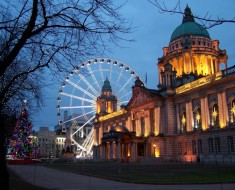Naples as we saw it on a brief visit a few years ago is big, aggressive, beautiful, smart and formidable. It shouts at you, seems to enjoy the impact it makes on you, but is impervious to how you may judge it. We have rarely been to a city where we have felt so out of place and yet at the same time at home. Traffic has its own rules in Naples, which seems to dictate that you drive as hard and as selfishly as you can as if no one else is on the road, and stay alive if possible. Miraculously it seems to work and we saw no accidents, only hairsbreadth escapes.
Alleged these days to be the home of various Mafioso, the city was founded many years ago by the Greek colony Cuma some time between the 7th and 6th centuries BC, and was given the name Neapolis, meaning new city. During the period of Roman domination, the town preserved its Greek language and customs. Following the Roman period, the city was dominated by many different groups of people (Goths, Byzantines, Lombards, Normans, Swabians, Angevins, Aragonese, Spaniards, Austrians, Bourbons and revolutionary French).
No one seems quite sure, how the phrase ‘See Naples and die’ (once you have seen it there’s nothing else to live for!) originated. It may have been first used during the reign of the Bourbons of Naples, considered by historians to have been the city’s Golden Age. Goethe uses the phrase in his book ‘Italian Journey’ (1786-88). From 1816 until its annexation to the Kingdom of Italy in 1861, the Kingdom of the Two Sicilies was the wealthiest and most industrialized of the various Italian states. After London and Paris, Naples was the third most populous city of Europe and certainly one of the most extravagantly wealthy. It then declined, but in recent decades has regained its cultural reputation.
We visited the great Museum of Archeology which of course has many artifacts from nearby Pompeii and Herculaneum, added to as excavations continue in both places.
We were particularly struck by the experiments to try and recover the remnants of some of the burned books, which I referred to in a previous blog. By an elaborate chemical process the actual texts are being discovered, some of that patient and necessarily slow process being carried out as I remember by a team from Oxford University. What was left after Vesuvius erupted in AD 97 continues to fascinate the historical explorer in all of us, and the museum reveals much of the fruits of that journey so far.
Bryan



